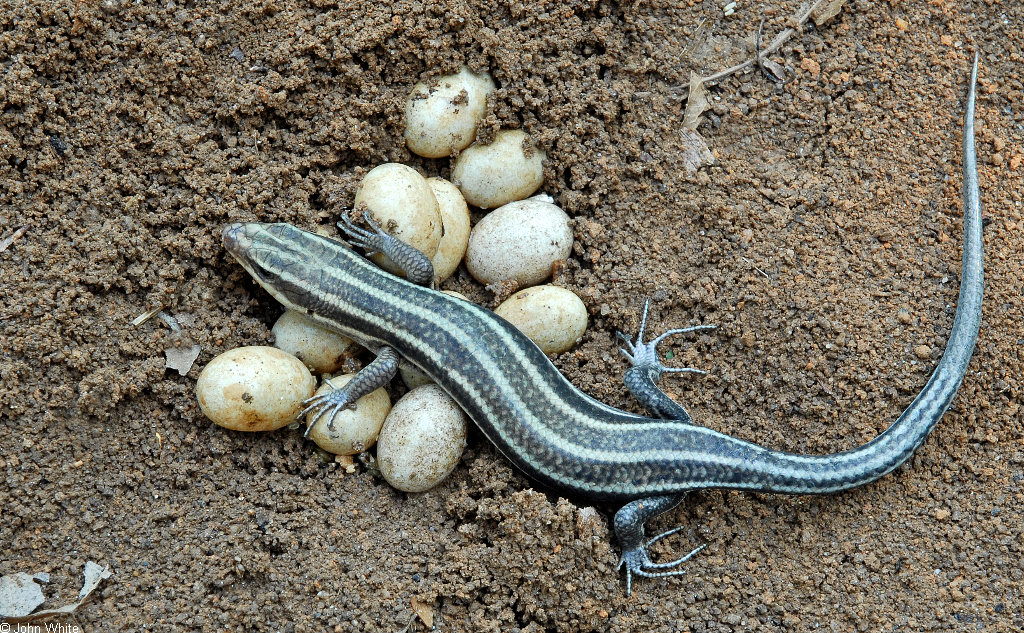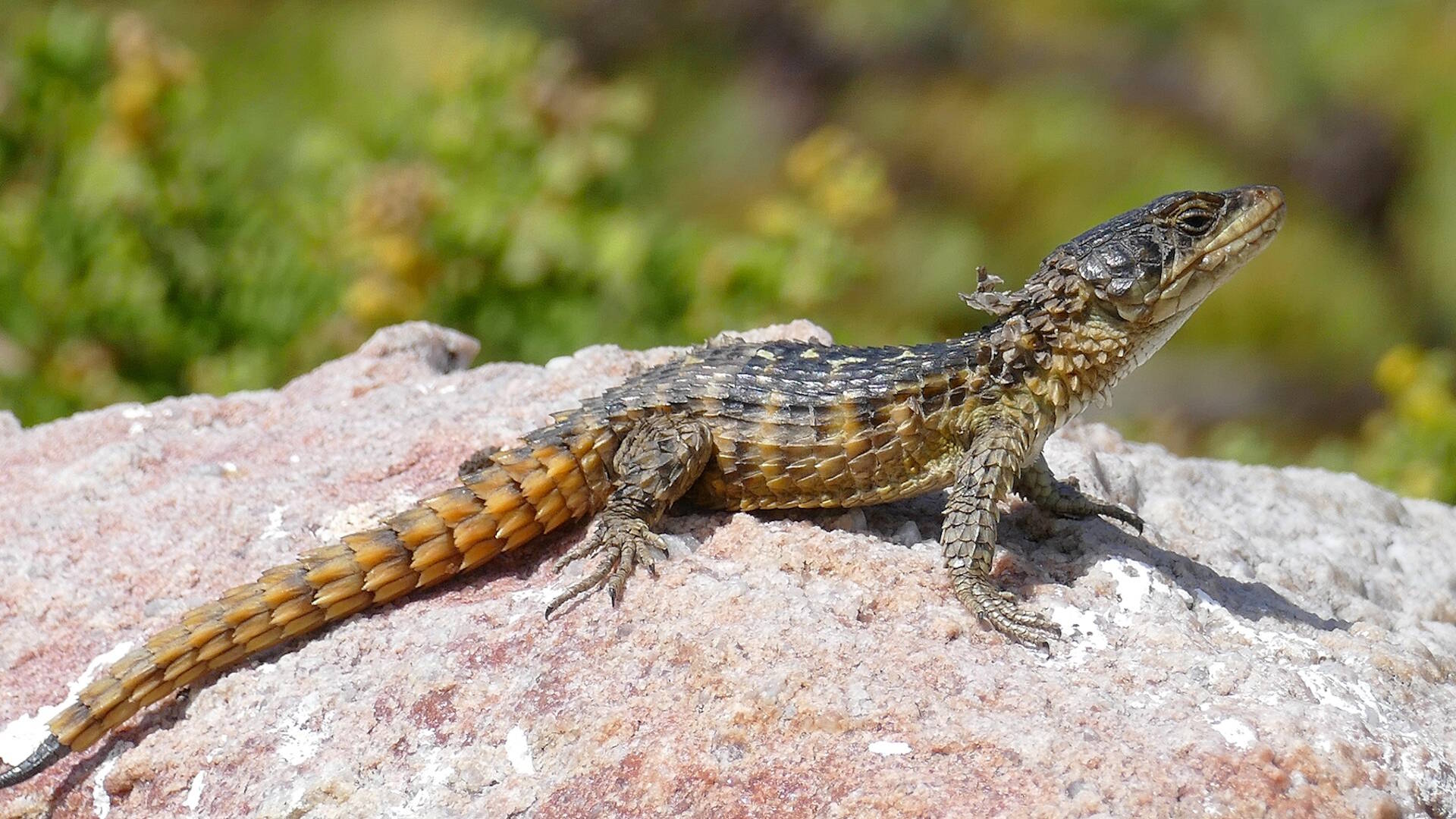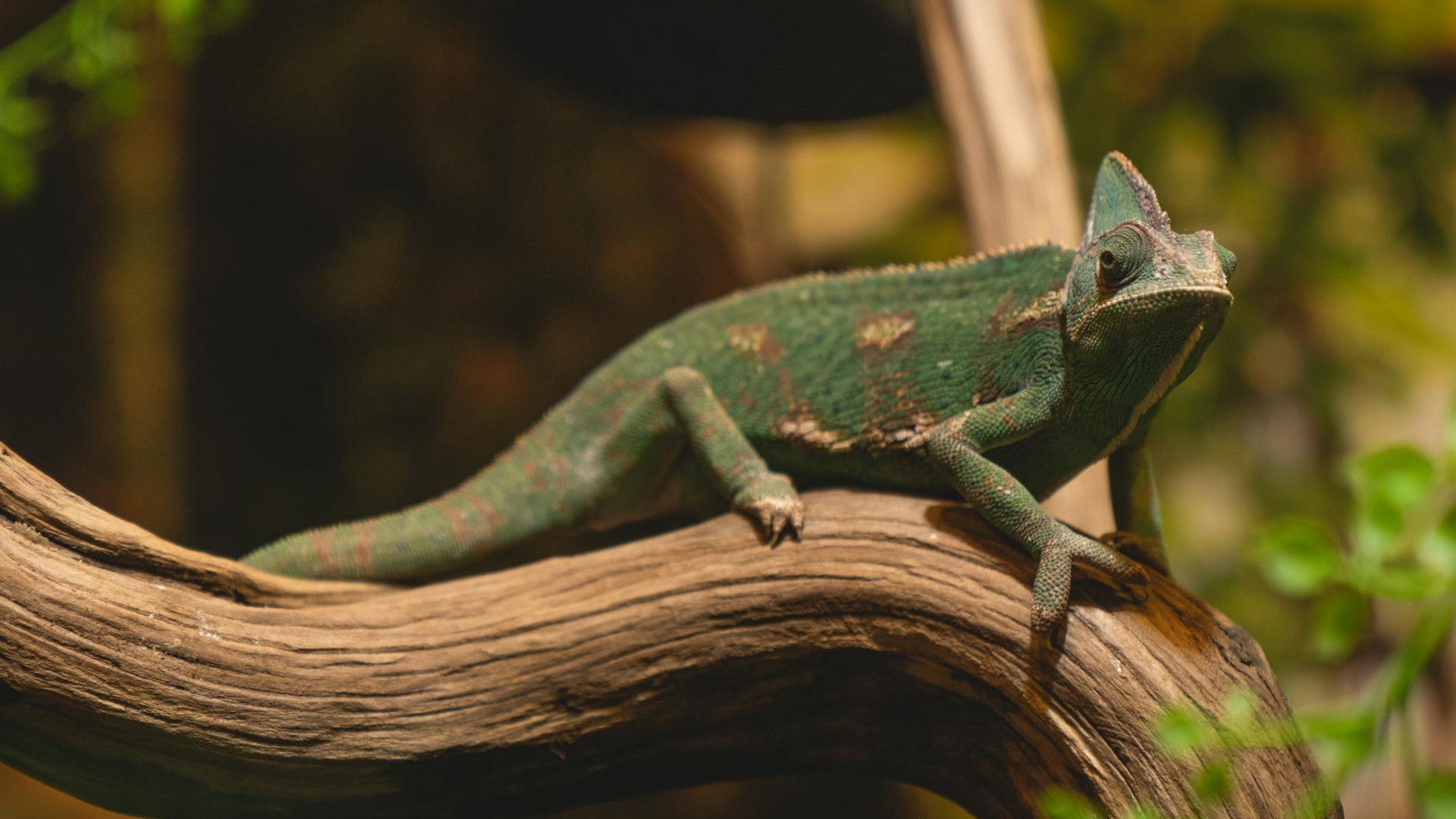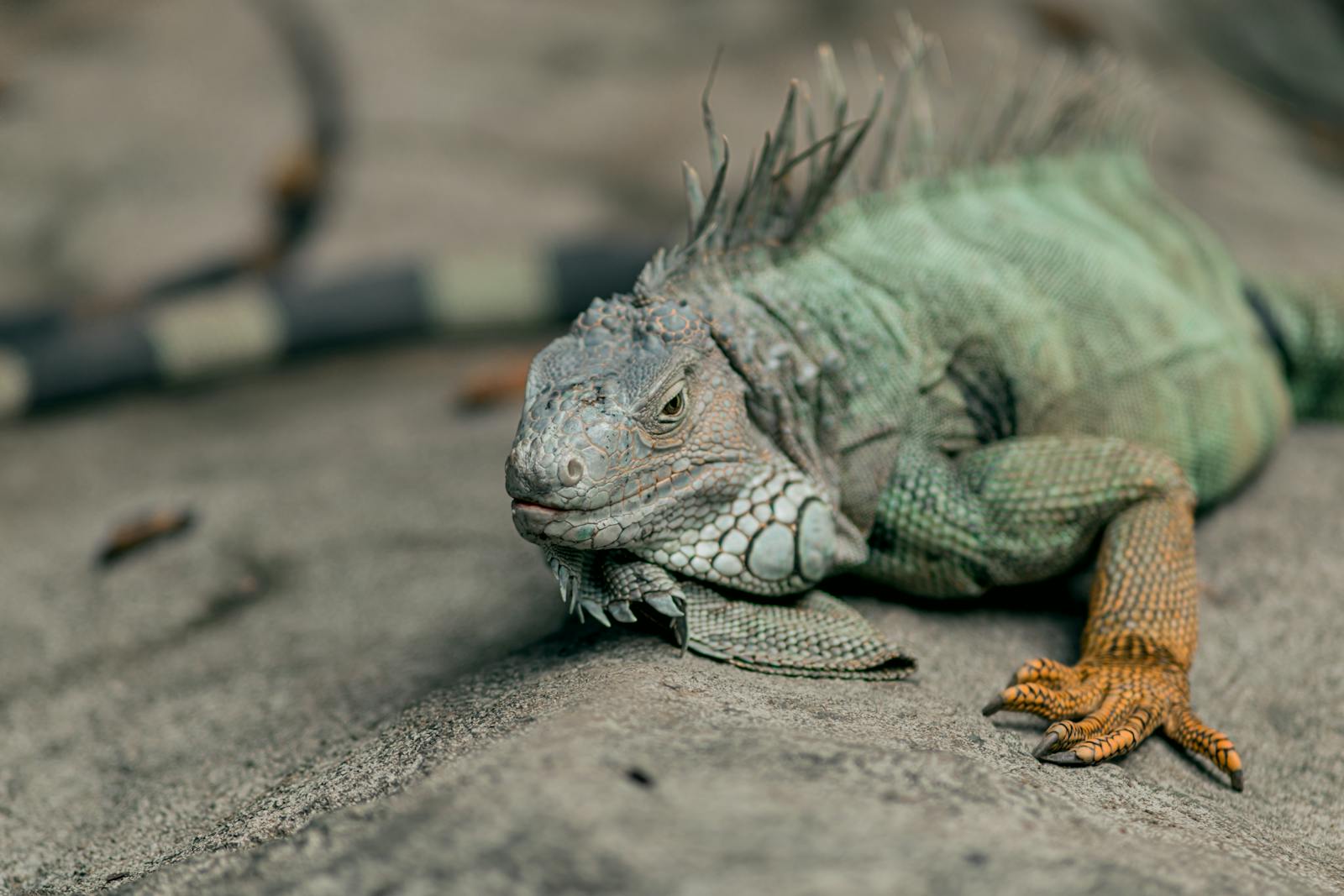While many people associate elaborate nesting behaviors with birds, the reptile world—particularly lizards—displays some of the most fascinating and diverse egg-laying strategies in the animal kingdom. From communal nesting sites used for generations to mothers who carry eggs inside their bodies until they hatch, lizards have evolved remarkable reproductive adaptations that help their young survive in challenging environments.
These varied approaches to reproduction reflect millions of years of evolutionary fine-tuning, with each species developing methods perfectly suited to its habitat, predator pressures, and environmental conditions. In this exploration of the most unique lizard nests and egg-laying habits, we’ll discover how these remarkable reptiles ensure their genetic legacy continues through sometimes bizarre, often ingenious reproductive strategies that showcase nature’s endless creativity.
Desert Night Lizard’s Live Birth Adaptations

The Desert Night Lizard (Xantusia vigilis) has evolved one of the most surprising reproductive strategies among lizards—they’re viviparous, meaning they give birth to live young rather than laying eggs. Unlike most egg-laying lizards, female Desert Night Lizards carry their developing embryos internally for approximately three months, providing them with direct nourishment through a primitive placenta-like structure.
This unusual adaptation is believed to be a response to the harsh, unpredictable desert environment where suitable egg-laying sites with stable temperatures might be scarce. By retaining the eggs within their bodies, these small lizards can regulate embryonic development regardless of external temperature fluctuations, giving their offspring a better chance at survival from the moment they enter the world.
The Extraordinary Community Nests of Desert Iguanas

Desert Iguanas (Dipsosaurus dorsalis) demonstrate remarkable nesting behavior by creating communal egg-laying sites that are used year after year, generation after generation. These communal nesting areas are strategically located in sandy areas with the perfect combination of temperature, humidity, and protection from predators. Female desert iguanas may travel significant distances to reach these traditional nesting grounds, where they dig burrows approximately 16 inches deep to lay their clutch of 3-8 eggs.
The truly fascinating aspect of these sites is that they become lizard nurseries with dozens of females potentially using the same general area, creating a patchwork of nests that can contain hundreds of eggs from different mothers. This collective nesting behavior likely evolved as an adaptive strategy to maximize offspring survival in harsh desert environments.
Komodo Dragon’s Guard Duty and Nest Construction

The world’s largest lizard, the Komodo Dragon (Varanus komodoensis), exhibits some of the most complex nesting behaviors among reptiles. Female Komodos construct elaborate nests by digging large depressions up to three feet deep and six feet wide, often choosing abandoned megapode bird mounds that already contain decomposing vegetation to provide natural incubation heat. After laying up to 30 eggs, the mother will actively guard her nest against predators for several months—a rare display of parental care among reptiles.
Perhaps most remarkable is that female Komodos have been observed digging false nests around the real one, presumably to confuse potential egg predators. This sophisticated nesting strategy showcases an unexpected level of maternal investment from a reptile often portrayed as simply a fearsome predator.
Temperature-Dependent Sex Determination in Bearded Dragons
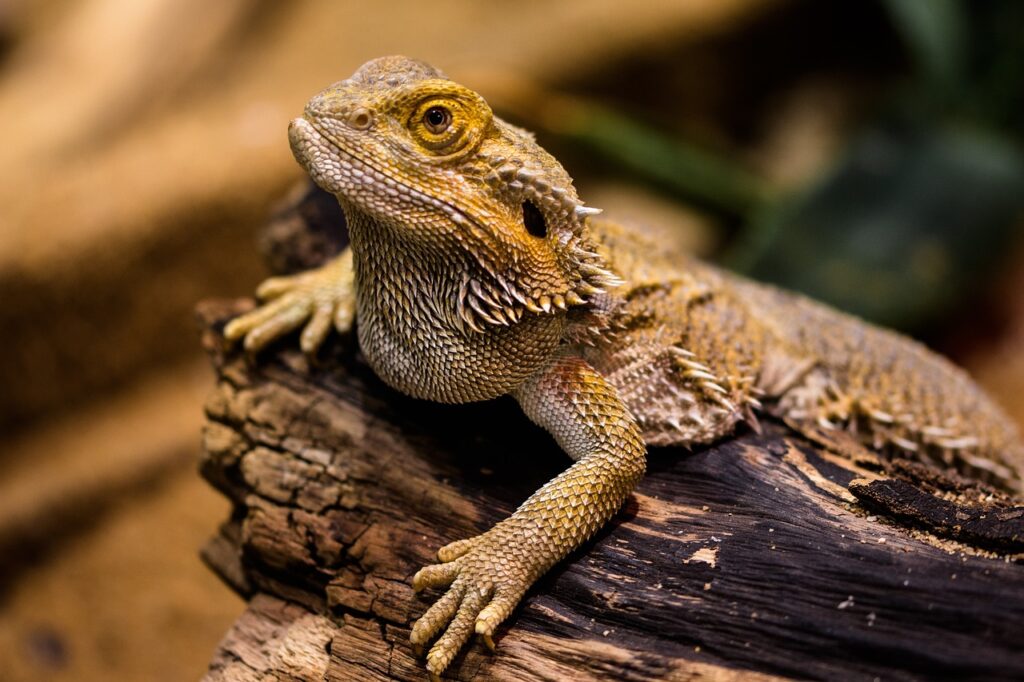
Bearded Dragons (Pogona vitticeps) demonstrate one of the most intriguing reproductive peculiarities in the reptile world through their temperature-dependent sex determination system. Unlike mammals whose offspring sex is determined by chromosomes, bearded dragon mothers indirectly “choose” the sex of their offspring by selecting nest sites with specific temperature profiles. Eggs incubated at temperatures between 79-87°F (26-31°C) typically produce more males, while temperatures above 90°F (32°C) tend to produce females.
This reproductive strategy allows bearded dragon populations to naturally adjust their sex ratios according to environmental conditions, potentially favoring one sex over another depending on which might be more successful in prevailing climate conditions. Research has shown that this temperature sensitivity is becoming increasingly relevant as climate change pushes ambient temperatures higher, potentially skewing wild populations toward female-dominated groups.
The Remarkable Shell-less Eggs of Chameleons

Chameleons have evolved a unique approach to egg-laying that sets them apart from many other lizards. Unlike the hard-shelled eggs of many reptiles, chameleon eggs possess a soft, leathery shell that allows for gas exchange and moisture absorption from the surrounding environment. Female chameleons dig surprisingly deep nesting chambers—sometimes up to 12 inches into the soil—where they deposit their clutch of eggs in carefully selected locations with precise humidity levels.
What makes their reproductive strategy particularly remarkable is the extended incubation period, with some species’ eggs requiring 9-12 months before hatching, one of the longest incubation periods among smaller reptiles. This lengthy development time allows the embryos to fully develop complex features like their iconic telescoping eyes and prehensile tails before emerging into the world as miniature versions of their parents.
Gila Monster’s Rare and Precious Egg Clutches
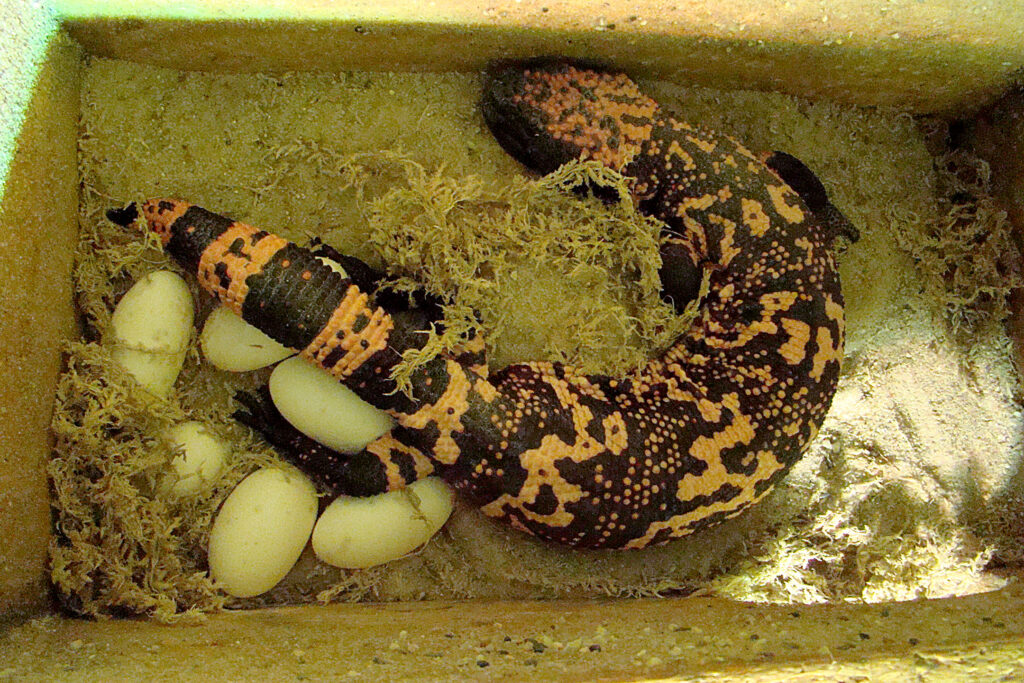
The venomous Gila Monster (Heloderma suspectum) demonstrates one of the most conservative egg-laying strategies among lizards, producing just one clutch of 2-12 eggs every other year. This infrequent reproduction represents a significant investment for the mother, who may use up to half of her body’s fat reserves to produce the large, nutrient-rich eggs. Female Gila Monsters create nests in abandoned mammal burrows, rocky crevices, or self-excavated chambers that can be up to 24 inches deep in soil with very specific moisture content.
Unlike many lizard species, Gila Monsters time their reproduction to coincide with the summer monsoon season in their desert habitat, which ensures that the hatching young will emerge during periods of maximum prey availability. This highly calculated reproductive approach exemplifies a quality-over-quantity strategy that has helped these iconic lizards survive in harsh desert environments for millions of years.
Leopard Gecko’s Calcium-Storing Adaptation

Leopard Geckos (Eublepharis macularius) demonstrate a fascinating physiological adaptation specifically evolved to support their reproductive needs. Female Leopard Geckos possess specialized calcium-storing organs called endolymphatic sacs, which become visibly enlarged prior to egg-laying season, appearing as bulges on either side of the neck. This calcium reservoir provides the critical minerals needed to produce multiple clutches of hard-shelled eggs throughout the breeding season without depleting the mother’s skeletal calcium.
When creating their nests, female Leopard Geckos seek out humid microhabitats within their arid range, often digging modest chambers under rocks or in loose substrate where they carefully position their eggs to maintain optimal moisture levels.
What makes their nesting strategy particularly unusual is that females will often return to the exact same nesting site for subsequent clutches, suggesting they can remember successful locations—an impressive cognitive feat for a reptile.
The Anole’s Remarkable Single-Egg Strategy

Anole lizards (Anolis species) have evolved one of the most unusual egg-laying patterns in the reptile world, producing and depositing just one egg at a time, but doing so every 1-2 weeks throughout their extended breeding season. This “assembly line” approach to reproduction represents a distinctive evolutionary strategy that spreads reproductive risk across time rather than investing in a single large clutch. Female anoles select their nesting sites with remarkable precision, often placing their tiny, white eggs in rotting wood, leaf litter, or shallow soil depressions that offer the perfect balance of humidity, temperature, and protection.
Perhaps most fascinating is that some anole species demonstrate a primitive form of parental care by remaining near their egg for several days after deposition, potentially guarding it during its most vulnerable early period. This reproductive strategy allows anoles to maximize their reproductive output while minimizing the risks associated with placing “all their eggs in one basket.”
Shingleback Skink’s Remarkable Live Birth

Photo by Bäras via Wikimedia Commons.
The Shingleback Skink (Tiliqua rugosa) showcases one of the most advanced viviparity adaptations among lizards, giving birth to remarkably developed live young after one of the longest gestation periods known in lizards. Female Shinglebacks carry their developing embryos for 4-5 months, during which the young receive nourishment directly from the mother via a sophisticated placenta-like structure—a reproductive feature more commonly associated with mammals than reptiles.
What makes their reproductive strategy particularly remarkable is that they typically give birth to just 1-4 extremely large offspring, each weighing up to 10% of the mother’s body weight and measuring nearly a third of her length. These newborns emerge fully formed, open-eyed, and capable of independent foraging within hours of birth, representing one of the most extreme examples of parental investment in the lizard world. This high-investment reproductive strategy is coupled with strong monogamy, with Shingleback pairs typically reuniting each breeding season for life—another mammal-like trait rarely seen in reptiles.
Flying Dragon’s Arboreal Nesting Sites
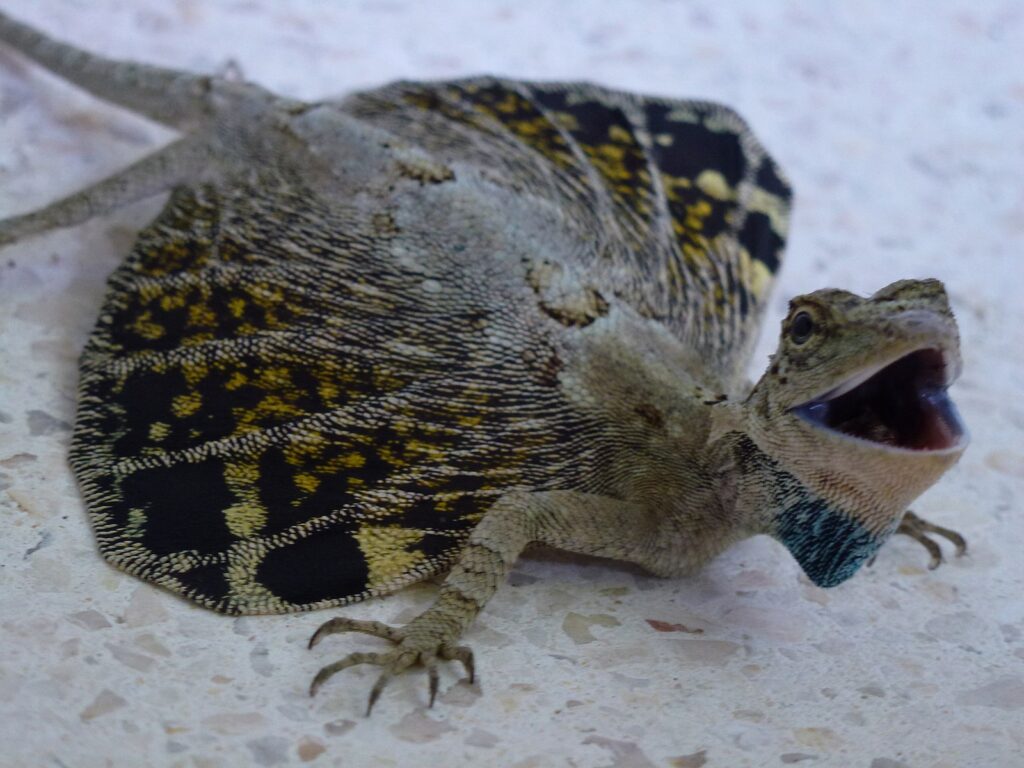
The Flying Dragon lizard (Draco volans), famous for its wing-like gliding membranes, employs a truly specialized egg-laying strategy uniquely adapted to its arboreal lifestyle. Female Flying Dragons descend from their treetop habitats to the forest floor—a dangerous journey that exposes them to ground predators they typically avoid—specifically to lay their eggs. Using their pointed snouts as digging tools, they create narrow, vertical tunnels approximately 4-6 inches deep in sun-warmed soil, where they deposit a small clutch of 2-5 eggs.
What makes their nesting behavior particularly remarkable is the mother’s dedication—she may spend hours carefully compacting soil around and over her eggs using her specialized head movements to create a nearly invisible nest entrance. After this exhaustive effort, the female immediately returns to the canopy, leaving her eggs to develop independently in the thermally stable environment she’s selected. This reproductive strategy represents a fascinating evolutionary compromise between the lizard’s aerial adaptation and the constraints of terrestrial egg development.
Prehensile-Tailed Skink’s Mammal-Like Birth

The Prehensile-tailed Skink (Corucia zebrata) from the Solomon Islands exhibits one of the most advanced reproductive systems among lizards, with adaptations remarkably similar to those of mammals. Unlike most lizards, these arboreal skinks give birth to fully formed live young after a gestation period of 6-8 months—one of the longest known among reptiles. The mother provides direct nourishment to her developing embryos through a highly developed placenta-like structure, allowing for substantial growth and development before birth.
What truly distinguishes this species’ reproductive strategy is that females typically give birth to just 1-2 extremely well-developed offspring, each weighing approximately 10% of the mother’s body weight, representing an extraordinary maternal investment rarely seen in reptiles. These newborns remain with their parents for several months after birth, receiving protection and social learning opportunities in one of the few known examples of reptilian family groups. This comprehensive package of reproductive adaptations—viviparity, small litter size, large offspring, and parental care—represents an evolutionary peak in reptilian reproduction that parallels mammalian strategies.
Thorny Devil’s Desert Egg-Laying Strategy
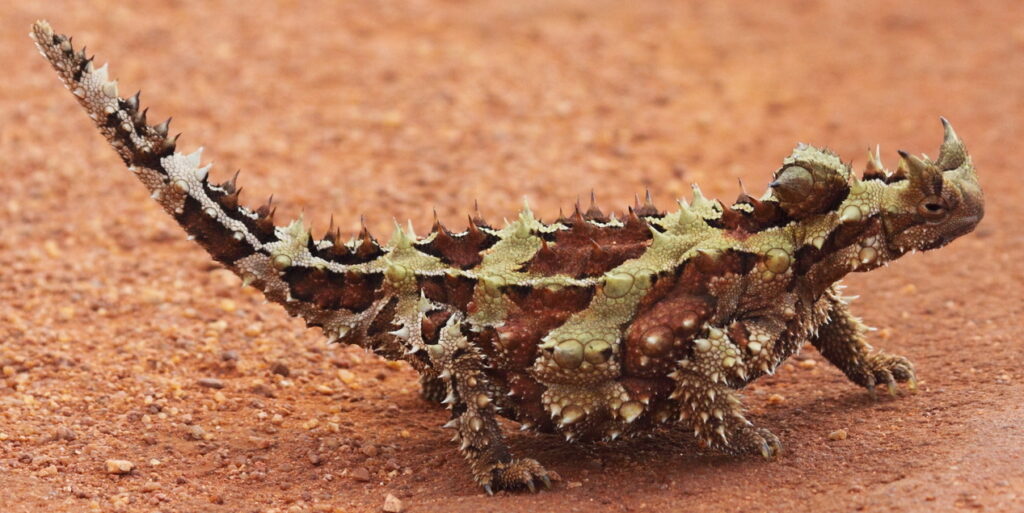
The Thorny Devil (Moloch horridus) of Australia’s arid regions has evolved a specialized egg-laying strategy perfectly adapted to the extreme desert environment it inhabits. Female Thorny Devils dig remarkably deep nesting burrows, sometimes extending 30-40 centimeters into the sand, creating a natural incubation chamber with stable humidity and temperature despite the desert’s extreme fluctuations. The mother carefully times her reproductive cycle to deposit her clutch of 3-10 eggs during the brief period when soil conditions are optimal, typically following rare rainfall events that temporarily increase soil moisture. What makes their strategy particularly ingenious is the precise depth selection—deep enough to protect eggs from lethal surface temperatures that can exceed 160°F (70°C), yet shallow enough to receive sufficient warmth for proper development.
After an incubation period of approximately 3-4 months, the perfectly miniature thorny devil hatchlings must dig their way to the surface and immediately master their specialized ant-hunting techniques without any parental guidance, making their successful reproduction all the more remarkable in one of Earth’s harshest environments.
Marine Iguana’s Underwater Journey to Nesting Sites
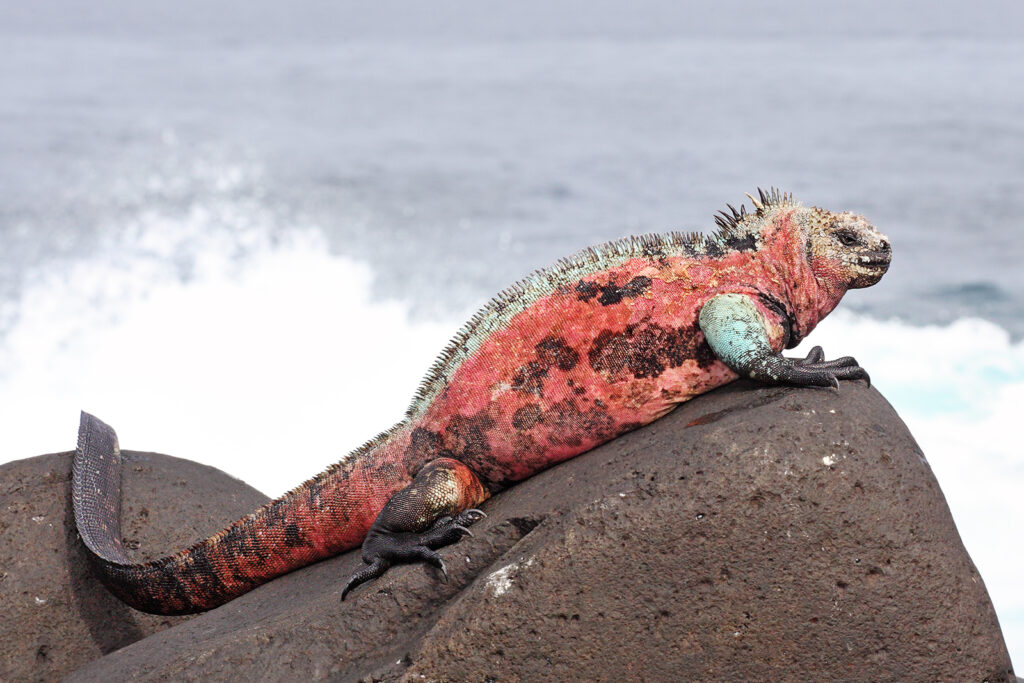
The Marine Iguana (Amblyrhynchus cristatus) of the Galápagos Islands demonstrates one of the most remarkable nesting migrations among lizards, with females undertaking arduous journeys to reach specific inland nesting sites. These primarily aquatic lizards, adapted for ocean feeding, must travel significant distances away from their coastal territories to locate suitable sandy areas for egg deposition, navigating across sharp lava rocks that can cause significant physical injury. Female Marine Iguanas dig nesting burrows up to three feet deep in warm volcanic soil, where they deposit clutches of 2-20 eggs before meticulously filling and disguising the entrance. What makes their nesting strategy particularly fascinating is the extreme energy expenditure involved—females may lose up to one-third of their body weight during the nesting process and must immediately return to intensive algae feeding to recover. The eggs incubate for approximately 3-4 months, timed perfectly so that hatchlings emerge during the season when tide pools are richest in the algae that constitutes their specialized diet, demonstrating a remarkable synchronization between reproductive timing and environmental food availability.
Conclusion

The diverse and often surprising reproductive strategies employed by lizards demonstrate the incredible adaptability of these ancient reptiles. From viviparity to communal nesting, elaborate maternal care to temperature-dependent sex determination, lizards have evolved a remarkable arsenal of reproductive approaches that help ensure their species’ survival in environments ranging from scorching deserts to tropical rainforests. These varied egg-laying and nesting behaviors reflect millions of years of evolutionary fine-tuning, with each adaptation solving specific environmental challenges faced by different species.
By understanding these fascinating reproductive strategies, we gain not only appreciation for the complexity of lizard biology but also insights into how reproduction has evolved across the animal kingdom. As climate change increasingly impacts global ecosystems, these specialized reproductive adaptations may face new challenges, making our understanding of them all the more crucial for conservation efforts aimed at protecting these remarkable reptiles for future generations.

